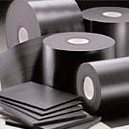Materials Matter: The Importance Avoiding Highly Toxic Materials in Sealants and Adhesives
- 6 March 2017
- Posted by: Madhuraka
- Category: Article
 Sealants and adhesives are employed wherever surface parts require a bonding agent. The chemical compounds anchor parts and protect vulnerable materials from corrosive forces. Basically, these tacky substances chemically cement and protect pretty much everything, so they’re found everywhere. Ironically, those same chemicals can cause havoc, both environmentally and locally, unless we avoid the highly toxic materials once used as their base ingredients.
Sealants and adhesives are employed wherever surface parts require a bonding agent. The chemical compounds anchor parts and protect vulnerable materials from corrosive forces. Basically, these tacky substances chemically cement and protect pretty much everything, so they’re found everywhere. Ironically, those same chemicals can cause havoc, both environmentally and locally, unless we avoid the highly toxic materials once used as their base ingredients.
Avoiding Archaic Glues
There was little legislation governing the production of old glues, which is why highly toxic materials once prospered in the adhesives and sealants industry. These Volatile Organic Chemicals (VOCs) provided a fast route to curing excellence, but they emitted dangerous gaseous byproducts. A walk around a building project, as one example, treated the nose to a chemical soup of nasty toxic odours. Arguably, these partially cured adhesives would lose their potent airborne content as they aged, but that wasn’t always the case. Besides, no one wants to deal in generalizations when we’re talking about a person’s health or the environment. The goal, therefore, was to eliminate all highly toxic materials from the next generation of sealants and adhesives.
Dealing with Volatile Organic Chemicals
A modern tacky chemical cement is clearly labelled as either VOC-free or low-VOC. The small type may look unimpressive, but it represents a huge formulation improvement, especially when compared to the emissions-heavy compounds of old. Those archaic substances belched enough invisible toxins to cause nearby eyes to burn, plus there were asthma attacks and skin itching to handle. Environmentally speaking, this situation could not be allowed to continue. This poisonous scenario was avoided, though, thanks to a new breed of glues.
Introducing the Family-Friendly Chemical Revolution
Low VOC formulations, sometimes as low as two percent, dismiss toxic chemicals in favour of those that have been rated as an environmentally amiable substitute. The resulting product is just as robust as the older substance, but it doesn’t emit hazardous gas. No breathing difficulties occur due to this reformulation effort, nor is there any eye burning, skin itching, or any other health-related problems. Similarly, the toxic material expulsion movement, as enforced by several environmental protection agencies, prevents any possibility of an atmospheric reaction. That last feature includes a provision for preventing the formation of the carbides and carbonates that are known to jeopardise the integrity of our atmosphere.
When practicing a toxic material avoidance program, one that targets sealants and adhesives, we keep product bonding characteristics enviably strong. The strong compound rejects the VOCs that are responsible for atmospheric decay and health-oriented issues by employing a non-toxic base, a family of chemicals that won’t cause any of the nasty reactions once associated with older glue types.

